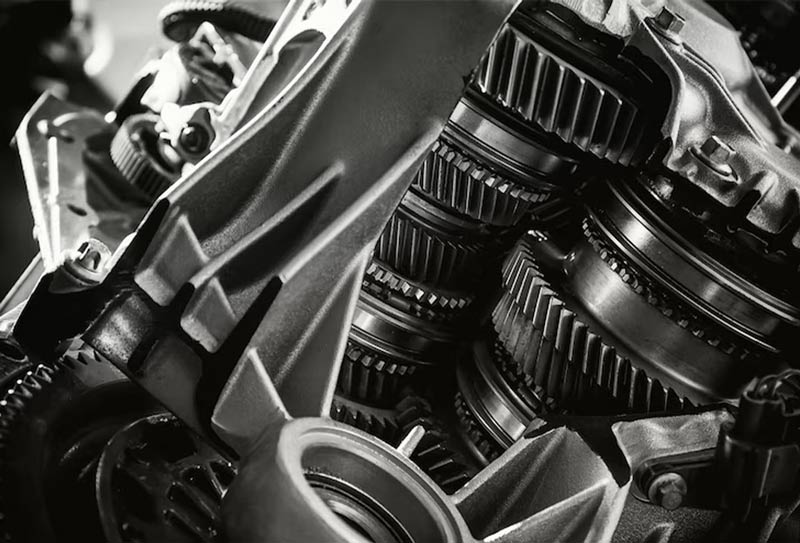Overview
The increasing spending towards advanced materials in the manufacturing sector on account of being capable of improving functionality, enhancing survivability, and inducing low life cycle costs is expected to remain a key trend. Therefore, the potential of advanced materials namely high-performance alloys could not be ignored in the aerospace and defense sector on a global level. Although OEMs have still preferred aluminum in aircraft manufacturing, advanced materials such as high-performance alloys have been gaining momentum among the engineers due to their superior heat-resistant properties, excellent strength, and maintaining dimensional stability at temperatures higher than the other materials.
Ease of restrictions post-COVID-19, coupled with increasing willingness to pay airfare among millennials, is expected to prompt the industry participants operating in the aerospace and defense sector to open new avenues. Furthermore, the aftermath of the Russia-Ukraine war has created a new geopolitical equation worldwide. The majority of governments from the Western World to emerging economies such as China and India are expected to increase spending on enhancing their domestic manufacturing capability in the aerospace and defense sector. Therefore, such positive sentiments in the aerospace and defense sector are projected to pave the way for incorporating advanced materials, namely high-performance alloys over the next few years.
What are High-Performance Alloys?

High-performance alloys or super-alloys find applications because they exhibit superior properties such as excellent mechanical strength, superior thermal creep deformation resistance, surface stability and inducing corrosion resistance. These materials were developed for use in piston engine turbochargers of aircrafts. With the advent of new technologies, super-alloys have evolved as one of the key raw materials for the production of aerospace and marine turbine engine components. The growing acceptance of these specialty materials is attributed to rising awareness towards inducing measures in the aerospace industry to protect against exposure to severe oxidizing environments and extreme temperatures for reasonable periods.
High-performance alloys are available in the form of categories of nickel, iron, and cobalt. Some of the key available product variants include Inconel, Hastelloy, Rene alloys, Waspaloy, Incoloy and TMS alloys. Excellent resistance against oxidation and corrosion during high temperatures is one of the key features which pave the way for engineers in aerospace sector to prefer high-performance alloys.
Creep is a key lifetime factor affecting the performance and durability of aero-structure components such as gas turbine blades. High-performance alloys consist of face-centered cubic (BCC) metals, namely cobalt, iron, and nickel, which can possess superior creep resistance in high temperatures. Therefore, aerospace OEMs are projected to prefer these product forms to limit creep's negative impact.
Over the past few years, nickel-based high-performance alloys have gained enough market space in aerospace sector due to their ability to operate at high temperatures in a range of 800-1000 degrees. These nickel-based product variants are composed of chromium, iron, titanium, and cobalt materials. Such amalgamation of various materials in a single product form is expected to promote the use in manufacturing various aerospace components, namely high-pressure turbine blades, discs, combustion chamber, afterburners and thrust reversers.
Aerospace Sector Scenario

The global aerospace sector has been witnessing growth due to increasing demand for passenger travel post-lifting COVID-19 restrictions coupled with increasing spending on orders of new military aircraft by various national governments. As of 2023, the global annual shipments of aircraft was estimated at more than 5000 with a value of over USD 1.5 trillion. It is expected that the requirements of aircrafts is expected to reach a tally of more than 40,000 over the next 20 years, with an estimated valuation of USD 8.1 billion. The aerospace industry is divided into five key products: civil aviation aircrafts, private passenger aircrafts, military aircrafts, helicopters, and propeller aircrafts. Among these key product variants, civil and military aircrafts are the key contributors in the commanding position to decide the movement of aircraft industry on a global level.
Over the past few years, the aerospace sector has been witnessing the following developments which will boost the production of commercial as well as defense aircraft in the near future:
- In June 2023, GE Aerospace signed a Memorandum of Understanding (MoU) with Hindustan Aeronautics Limited (HAL) to produce fighter jet engines of 98 kilo-newton thrust for the Indian Air Force. This engine will power light combat aircraft (LCA) Mark II and is likely to be commercialized by the end of 2024
- In April 2023, Airbus signed an agreement for the expansion of A320 aircraft family final assembly with Tianjin Free Trade Zone Investment Company Ltd. and Aviation Industry Corporation of China Ltd. This agreement will help in supporting the company's objective of keeping 75 aircraft production count per month
- In January 2023, Boeing announced plans to add a new 737 MAX production line in Everett, Washington by mid-of 2024. Furthermore, the company is also planning to enhance production by 50 per month in the time frame of 2025 to 2026
- In December 2022, the government of Japan announced plans to develop next-generation fighter jet with the cooperation of U.K. and Italy. This plan will play a key role in replacing the ageing fleet of F2 of U.S. with Mitsubishi F-X fighter jet. This deal is expected to play a key role in countering China's growing asserters in Indo-Pacific region
- In November 2022, the Ministry of Defense, Russia revealed the planned expansion of the production capacity of fifth generation multifunctional aircraft named Su-57
- In October 2022, the government of India laid the foundation of C-295 aircraft manufacturing facility in Gujarat, India. This facility will manufacture 40 C-295 aircraft for Indian Air Force as a part of the collaboration between Spain-based Airbus Defence and Space and Tata Advanced Systems Limited
- In May 2022, China's first domestically made passenger jet completed its first commercial flight. Commercial Aviation Corporation of China (Comac) developed this passenger jet under the brand name of C919 with an estimated capacity of 130 passengers. The company reveals that more than 1200 jetliners of C919 have been ordered. Furthermore, Comac is planning to build aircrafts in a planned capacity of 150 units per year for the next five years
- In March 2022, Lockheed Martin announced plans to invest more than USD 1 billion in Saudi Arabia aerospace industry. This plan will facilitate the manufacturing, R&D, and MRO (maintenance, repair and operations) initiatives in Saudi Arabia and thus, in turn, will promote the expansion of the aerospace industry on a domestic level
The wide-ranging use of aerospace and defense materials can be attributed to meeting cost and environmental requirements for lightweight aircraft, along with maintenance requirements for structural integrity. Aerospace and defense materials market size is valued at USD 30.52 billion by 2028 and is expected to grow at a rate of 4.10% for the forecast period of 2021 to 2028.
To learn more about the study, visit https://www.databridgemarketresearch.com/reports/global-aerospace-and-defense-materials-market
High-Performance Alloys in Aerospace Sector
The aerospace sector accounted for more than 50% of the global high-performance alloys market in 2022. Super-alloys find use in various aircraft namely, commercial aircrafts, cargo planes, business jets, and military aircrafts. Most aerospace OEMs prefer use of high-performance alloys in turbofan engines because of excellent thermal resistance and superior corrosion protection. Furthermore, these alloys have gained acceptance over the past few years in applications, namely, fuselage structural and fastener components and turbine blades.
Table: Commonly used High-Performance Alloys
Alloy
|
Properties
|
Ti alloys
|
Lightweight and high-strength materials
|
Ti‐6Al‐4V
|
403/403Cb
|
Excellent rupture strength and martensitic 12%Cr Steel
|
GTD‐450
|
Martensitic, precipitation hardened, and high chromium content
|
A286
|
High strength and austenitic
|
Hastelloy X, Nimonic (Including 263,618,230, 105)
|
High strength and high temperature
|
Alloy 718
|
High temperature to 1300 degrees,
|
Alloy 706
|
Less segregation
|
LC Astroloy, IN 100, MERL76, Rene 88 DT, Rene 95, Udimet720/ 720 LI
|
Powder Metallurgy
|
IN‐713, IN 100/Rene 100, Rene 125 Hf
|
Cast high-performance alloys strengthened with W and Mo
Improved durability with more than 2% HF
|
Rene41, Rene77, Rene 80, Rene 80+Hf
|
Excellent Corrosion resistance and low high-temperature strength
|
IN 738, GTD‐111
|
Directionally solidified castings and internal cooling
|
FSX 414
|
Hot corrosion protection
|
GTD‐222
|
Superior creep strength
|
HA188
|
Hot corrosion protection till 2000 degrees
|
Why High-Performance Alloys?
High-performance alloys are preferred in manufacturing various components of aerospace structures as they have the ability to exhibit the following key features and benefits:-
- Excellent creep resistance
Creep is a failure mode where a component deforms at a stress level below its ultimate tensile strength. High-performance product forms can enable turbine blades to operate at extreme heat generation and a heavy load of centripetal force. Prior to the introduction of high-performance alloys in the aerospace industry, the extensive use of non-creep resistant materials resulted in not lengthening turbine blades while spinning and thus causing interference with engine casings
- Superior thermal resistance
Jet turbines can generate high thrust levels on compressing of intake air and fuel. Therefore, the extensive power of engine can be produced as a result of high compression which in turn increase the level of heat generation. High-performance alloys find utility in inducing high combustion pressures, significantly increasing engine efficiency
High-performance alloys have the ability to form two-phase equilibrium microstructure, which influence the ability of alloying elements to arrange themselves and provide protection from different modes of failure
Types of High-Performance Alloys
Nickel-based Alloys
- Hastelloy: - These nickel alloys are a combination of chromium and molybdenum, which help exhibit superior corrosion resistance, good weldability and excellent acid resistance. One of its variants, namely, Hastelloy X, has been used in the aerospace industry for more than 50 years because it provides excellent properties such as temperature, oxidation, and carburization resistance. These variants help resist stress cracking due to oxidation and maintain ductility during temperature exposure till 1600° F. As a result, aircraft OEMs prefer Hastelloy X for use in engine turbines, tailpipes, and other aircraft parts.
Data Bridge Market Research analyzes that the global nickel alloy market is expected to reach a value of USD 19,370,672.30 thousand by 2030, at a CAGR of 5.59% during the forecast period of 2023 to 2030. The market report also comprehensively covers pricing analysis, patent analysis, and technological advancements.
To learn more about the study, visit https://www.databridgemarketresearch.com/reports/global-nickel-alloy-market
Inconel:-These nickel-based product forms are combination of chromium and iron, which are used for providing corrosion protection at high temperatures. Inconel is available in the variants of Inconel 625 and Inconel 718, commonly used in the aerospace industry. Such variants find use in high temperature aerospace applications namely fuel nozzles, afterburner rings, and other engine components. The effective utilization of Inconel results in resisting corrosion due to jet fluids and other liquids. Furthermore, Inconel has been used in rockets and space exploration vessels over the past few years.
Copper-based alloys:-Copper based high-performance alloys are used for exhibiting excellent mechanical properties and workability. Some of the properties are listed below:-
- Excellent thermal resistance as compared to nickel-based alloys
- Superior corrosion protection
- Good thermal fatigue resistance at high temperatures
- Better weldability
Iron-based alloys:-Iron based super-alloys can exhibit the following characteristics:-
- Excellent wear resistance as compared to nickel counterparts
- Superior creep resistance
- Good Weldability
- Excellent machinability
Manufacturing Outlook of High-Performance Alloys
Over the past few years, super-alloy processing has been transformed from the conventional method of casting to the advanced technologies namely, directionally solidified casting and single-crustal casting. Directionally solidified casting works in such a way that the molds are designed to incorporate one inner face, which is considered colder as compared to the rest materials. This process is executed by using water cooled heat exchangers. The ability of such casting process to control the direction of grain boundaries which pave the way for engineers of Aerospace OEMs to design the components in specific directions. As a result, directionally solidified casting is preferred to be deployed for the production of jet turbine engine components.
On the other hand, single crystal casting is not only considered an improvised version of directly solidified process as the former can eliminate the problems such as slip, cavitation and inclusions caused by grain boundaries. Furthermore, single crystal process has the ability to induce the creep resistance in the components manufactured for aircraft components. Therefore, the aerospace OEMs are projected to prefer single crystal casting processes as the growing acceptance of creep resistance as key parameter to evaluate the quality of components for commercial and passenger aircrafts.
Next-generation Aircrafts: A New Opportunity
Shifting inclination towards emphasizing on four pillars namely, economy, environment, electrification, and efficiency, among aircraft OEMs, including Boeing and Airbus is expected to promote the scope of next-generation aircraft. For instance, in May 2021, Airbus announced plans to develop Next Generation A322 with total length of aircraft till 50 meters. Aircraft Creep strength and high-temperature protection are key attributes that play a key role in enhancing the overall efficiency of aircrafts next-generation variants. As a result, high-performance alloys are preferred by OEMs in aerospace sector as advanced materials for the production of various components namely engines and blade liners of next-generation aircraft so that better thermal protection and excellent creep strength could be induced.
Competition and Manufacturers' Response to Aerospace Industry
The majority of high-performance alloys manufacturing companies have dedicated their product forms targeted to the aerospace sector. The industry is penetrated by the international and regional players who utilize strategic partnerships to maintain their market share. Key manufacturers include Alcoa Inc.; Hitachi Metals Ltd.; Outokumpu; Allegheny Technologies Incorporated; H aynes International Inc.; Carpenter Technology; and VSMPO-Avisma Corporation.
Some of the new companies are gaining market space through the launch of innovative products. For instance, in September 2019, Sweden-based Digital Metal AB launched a new two-binder jet 3D-printed high-performance alloys aimed for extreme environment. These products are available in the preposition of DM 247 and DM 625, with an exceptional binder jetting technology that prevents these problems through printing in an ambient temperature without applying any heat. DM 247 is derived from MAR M247, which finds utility for the production of turbine blades and other aerospace applications in extreme temperature. On the other hand, DM 625 is Inconel grade with its application in seawater, chemical processing equipment, nuclear, and aerospace segments.
With the advent of additive manufacturing on a global level, it is expected that the high-performance alloys manufacturing firms are likely to invest in forming strategic alliances with additive providers so that the next generation product categories would be introduced soon. Furthermore, most scientists in aerospace sector believe that high-performance alloys are suitable for 3D printing. Therefore, the aircraft manufacturing OEMs are projected to use the perfect combination of unique binder technology and super-alloys' USP in a single-product category.
Data Bridge Market Research analyses that the market is growing with a CAGR of 20.9% in the forecast period of 2023 to 2030 and is expected to reach USD 91,853.88 million by 2030. The major factor driving the growth of the additive manufacturing market is the increasing demand for lightweight components from the automotive and aerospace industries.
To learn more about the study, https://www.databridgemarketresearch.com/reports/global-additive-manufacturing-market
Over the past few years, the research institutes in aerospace sector have been increasing spending towards developing next-generation super-alloys for the production of aircrafts. For instance, in February 2020, NASA announced the development of nickel-based super-alloy by using specific alloying elements that limit deleterious deformation at temperatures above 700°C. These nickel-based high-performance alloys utilize powder metallurgy (PM) composition, limiting the deleterious gamma-prime to gamma-phase transformation and inducing stacking faults during creep deformation. It is well known that the materials in aircraft structures tend to plastically deform under load during high temperature. As a result, these high-performance product forms are considered superior creep-resistant materials which play a crucial role in improving the performance of aircraft engines.
Conclusion
High spending on advanced materials to reduce total maintenance spending coupled with the introduction of new generation aircrafts is expected to promote the scope of high-performance alloys over the next few years. Furthermore, the rising spending on incorporating new technologies, namely 3D printing technology, is expected to pave the way for aerospace sector OEMs to synergize it with the best qualities of super-alloys and develop innovative components for commercial and military aircrafts.
The extensive initial investment required for incorporation coupled with limited machining of high-performance alloys to various shapes is expected to pose a key challenge to the buyers operating in aerospace OEMs segment. Furthermore, volatility in raw material prices of metals on account of fluctuating supply dynamics from metal producing destinations of nickel, aluminum, copper, and iron is expected to pose a key challenge in ensuring the access of high-performance alloys for the aerospace sector in the near future.
Data Bridge Market Research analyses that the high performance alloys market is expected to undergo a CAGR of 5.80% from 2023 to 2030. In addition to the insights on market scenarios such as market value, growth rate, segmentation, geographical coverage, and major players, the market reports curated by the Data Bridge Market Research also include in-depth expert analysis, geographically represented company-wise production and capacity, network layouts of distributors and partners, detailed and updated price trend analysis and deficit analysis of supply chain and demand.
To get a detailed insight of the market, visit https://www.databridgemarketresearch.com/reports/global-high-performance-alloys-market




